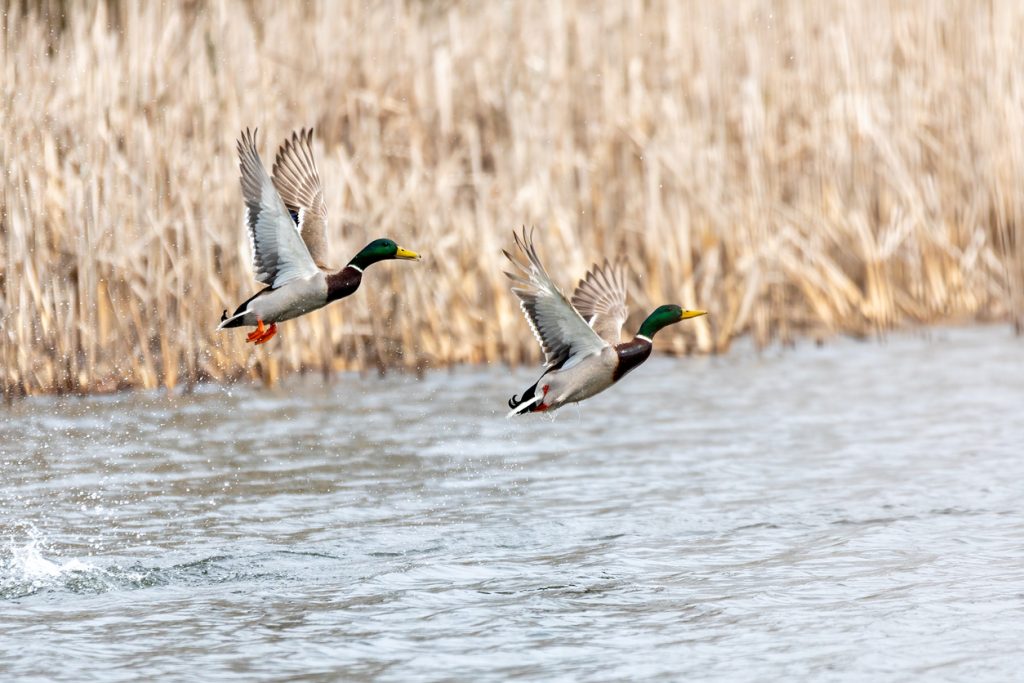Property managers can create productive wetlands with little expense. In fact, enhancing and protecting existing wetland areas carry little to no development cost.
Before selecting a new wetland site, determine if there are restrictions or necessary permits. Find out about government and non-government cost-share programs. Consider your long-term objectives and necessary site preparations. This process will help you determine if your site can meet expectations within your budget.
A good water source is key. A wetland cannot function without water. Sites that make good wetlands include floodplains at the base of hills and back swamp areas. Old, abandoned river channels and areas below ponds or lakes work well also. The water can come from underground sources, such as wells or springs, or from ponds, lakes, or streams. While costly to pump water, it will deliver a dependable source.
Why Wetland Habitats matter
Wetlands support a broad diversity of native plants and wildlife. Besides waterfowl, shorebirds, and songbirds, wetlands can also support fish populations. Those near streams and rivers are important for fish reproduction.

If you want to create waterfowl hunting, you’ll need adequate water, food, and cover. This is critical in early spring and fall. Quality food is especially true during the spring migration. A good nesting season helps ensure ducks will be in good physical condition for breeding. Nesting success helps provide better hunting opportunities the following fall. Adding quality native wetland plants species will help you create more attractive sites. You’ll choose plants by determining your wetland type.
Shop Native Plants at Forrest Keeling
Midwest wetlands are generally divided into herbaceous and timbered types. Herbaceous wetlands often maintain water and are marshy. Its native plant species will include emergent grasses, rushes, sedges, and shrubs. Timbered wetlands offer a variety of bottomland hardwood and softwood species. This type of wetland will have dry periods. Flooding timbered wetlands for short periods helps prevent loss or injury of trees. Timbered wetlands should only flood when trees are dormant or in alternate years.
Bottomland oaks are important for wildlife of timbered wetlands. Acorns, especially smaller acorns, are an important food for several waterfowl species. Ducks prefer smaller acorns with small caps. The native oaks most preferred by mallards tend to be Nuttall and willow oak acorns.
Cultivate Wetland Habitat with forrest Keeling
Forrest Keeling RPM-produced wetland natives are the benchmark for conservation wetland remediation sites. RPM-produced stock grows twice as fast. Trees achieve three to five feet of growth or more during the first year. This height puts them beyond easy reach of deer, floodwaters, and sunlight competition. Also, the RPM trees fruit faster. Acorns (hard mast) develop in the fourth year. This guarantees better regeneration rates and more wildlife food.
Forrest Keeling developed a Walk-A-Way system for wetland restoration. Its design helps achieve over 95% survivability. This is critical on projects that get little or no attention after planting.
The Walk-A-Way system starts with ground preparation. Plowing, disking and berms are created in June or July. Cover crops are established in late summer followed by late fall tree establishment. Weed mat and fertilization follow in April or May. The combination of the Walk-A-Way system with RPM-produced hardwoods is unbeatable.
Contact us for recommendations of native species for your wetland. Forrest Keeling… restoring ecosystems one tree at a time.
